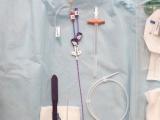A study of more than 12,000 telemedicine encounters involving children with respiratory ailments has found that antibiotics were prescribed in more than half of the visits, and that patient satisfaction was strongly linked to receiving an antibiotic.
Providers who prescribed antibiotics were more than three times a likely to receive a 5-star rating from patients, researchers from the Cleveland Clinic reported yesterday in Pediatrics.
The study adds to a growing body of research suggesting that antibiotic prescribing for respiratory tract infections (RTIs) is high in telemedicine, both for children and adults, and that patients who receive antibiotics are more satisfied with the encounter.
The authors say it raises questions about the limits of the technology, especially in treatment of children. By enabling parents to connect to a healthcare provider remotely, through a smart phone or tablet, direct-to-consumer (DTC) telemedicine provides families with a more convenient and cheaper option for receiving care. But the inability to look inside a child's ear, or perform a strep test, make it hard to follow guidelines for appropriate prescribing.
A clinician who was not involved in the study but regularly sees patients seeking quick treatment for respiratory ailments says the findings of the study highlight some of the concerns about telemedicine.
"Telemedicine has the tremendous potential to improve access to healthcare and decrease unnecessary ER visits when used correctly and responsibly," J.D. Zipkin, MD, associate medical director of Northwell Health-GoHealth Urgent Care, a network of urgent care centers in New York, told CIDRAP News. "Unfortunately, the field as a whole is in need of higher clinical quality standards and regulations, and has the potential to promote poor healthcare practices without them."
Satisfaction linked to antibiotic prescribing
For the study, a team led by Charles Foster, MD, looked at DTC telemedicine records from a national telemedicine platform used by Cleveland Clinic and other US hospitals from July 2016 through July 2018. They focused on visits for RTIs—including sinusitis, pharyngitis, bronchitis and/or bronchiolitis, otitis media, influenza, and other viral infections—by children 19 years and younger, looking specifically at what medications were prescribed, how long the visits lasted, and patient satisfaction. After each telemedicine encounter, parents were asked to rate their satisfaction on a scale of 0 to 5 stars (with 5 stars being the most satisfied).
Of the 12,842 encounters with 560 physicians, antibiotics were prescribed in 55%, antivirals were prescribed in 7%, and non-antibiotics (including oral steroids and nasal spray) were prescribed in 11% of cases. Antibiotics were most frequently prescribed for children diagnosed with pharyngitis (29%), sinusitis (23%), influenza (6%), bronchitis and/or bronchiolitis (5%), and otitis media (4%).
The most commonly prescribed antibiotics were amoxicillin (55%), amoxicillin-clavulanate (17%), and azithromycin (12%). Pediatricians were less likely than non-pediatricians to prescribe antibiotics (odds ratio [OR], 0.44; 95% confidence interval [CI], 0.29 to 0.68).
The adjusted proportion of parents who gave their provider a 5-star rating was highest among those whose children received an antibiotic (93.4%), compared with those who received no medication (80.8%), those who received a non-antibiotic (88.9%), and those who received an antiviral (92.6%). The odds of receiving a 5-star rating were most strongly associated with a prescription for an antibiotic (OR, 3.38; 95% CI, 2.84 to 4.02).
The analysis also found that telemedicine visits that ended in an antibiotic prescription tended to be 8 seconds shorter than when no medications were prescribed, and 37 seconds shorter than visits in which a non-antibiotic was prescribed.
"That 37 seconds is the difference between receiving the proper treatment, and promoting antibiotic resistance plus unnecessary side effects in children," Zipkin said.
Notably, visit length was only associated with higher odds of a 5-star rating when no antibiotic was prescribed (OR, 1.03 per 6 seconds; 95% CI, 1.01 to 1.06). And even though pediatricians were less likely to prescribe antibiotics, they were more likely receive a 5-star rating than non-pediatricians (OR, 1.50; 95% CI, 1.11 to 2.03).
Limits of the technology
The findings are in line with other studies by the same research team on antibiotic prescribing for RTIs in telemedicine. In a November 2018 study in JAMA Internal Medicine, Kathryn Martinez, PhD, MPH, and colleagues from the Cleveland Clinic reported that 66.1% of more than 8,000 telemedicine visits by adults for RTIs resulted in an antibiotic prescription, and that receipt of an antibiotic was the factor most strongly associated with a 5-star rating. In an October 2018 Annals of Internal Medicine study, they reported that 67% of more than 13,000 telemedicine encounters for RTIs received an antibiotic, and that encounters in which an antibiotic was prescribed were shorter than those in which either a non-antibiotic or no medication was prescribed.
In another study published in Pediatrics in April, a different team of researchers found that children with RTIs were prescribed an antibiotic in 52% of telemedicine visits, compared with 42% of those seen in urgent care and 31% of those seen by their primary care physician.
Foster and his colleagues say that, given the limitations of telemedicine for making certain diagnoses, the rate of antibiotic prescribing telemedicine for RTIs should be lower, especially since most RTIs are viral. They suggest stewardship measures may be needed. One suggestion is that when telemedicine providers are uncertain about whether a child has a bacterial respiratory infection, they should recommend parents seek in-person care.
"Adherence to stringent criteria for making the diagnoses of RTIs, such as acute otitis media, acute bacterial sinusitis, and streptococcal pharyngitis, is essential to judicious antibiotic prescribing," they write. "Patients suspected of certain diagnoses should be referred to an urgent care center for appropriate testing."
Zipkin suggests the limitations of telemedicine may be further exacerbated by the desire to keep patients happy.
"There are just too many things that truly require a stethoscope, a visualization of an ear drum, or a strep swab," he said. "Without that additional needed access to a complete medical examination, telemedicine providers are further pressured to cut corners and make incorrect assumptions to avoid sending the patient to the appropriate setting and losing their business."
In an accompanying commentary, Eli Sprecher, MD, of Boston Children's Hospital and Jonathan Finkelstein, MD, MPH, of Harvard Medical School, argue that the technology might work best when used in practices where providers already know the families and have access to their medical history.
"We do not underestimate the benefit to families and children of immediate access to expert care through digital interfaces," Sprecher and Finkelstein write. "We do wonder if this technology will be more safe and effective (or at least guideline adherent) if telemedicine is provided by practices or integrated delivery systems that have a relationship with the family, access to the electronic health record, capacity to make appointments, and ability to serve as a safety net if the child's symptoms change,"
Zipkin agrees.
"The best telemedicine services are also tied to physical healthcare locations that allow patients to go into a site for a full examination and testing if needed," he said.
See also:
Aug 1 Pediatrics abstract
Aug 1 Pediatrics commentary
Apr 8 CIDRAP News story, "Study finds high rate of antibiotic prescribing in kids' telemedicine visits"
Nov 1, 2018, JAMA Intern Med study
Oct 1, 2018, CIDRAP News stewardship/resistance scan





















